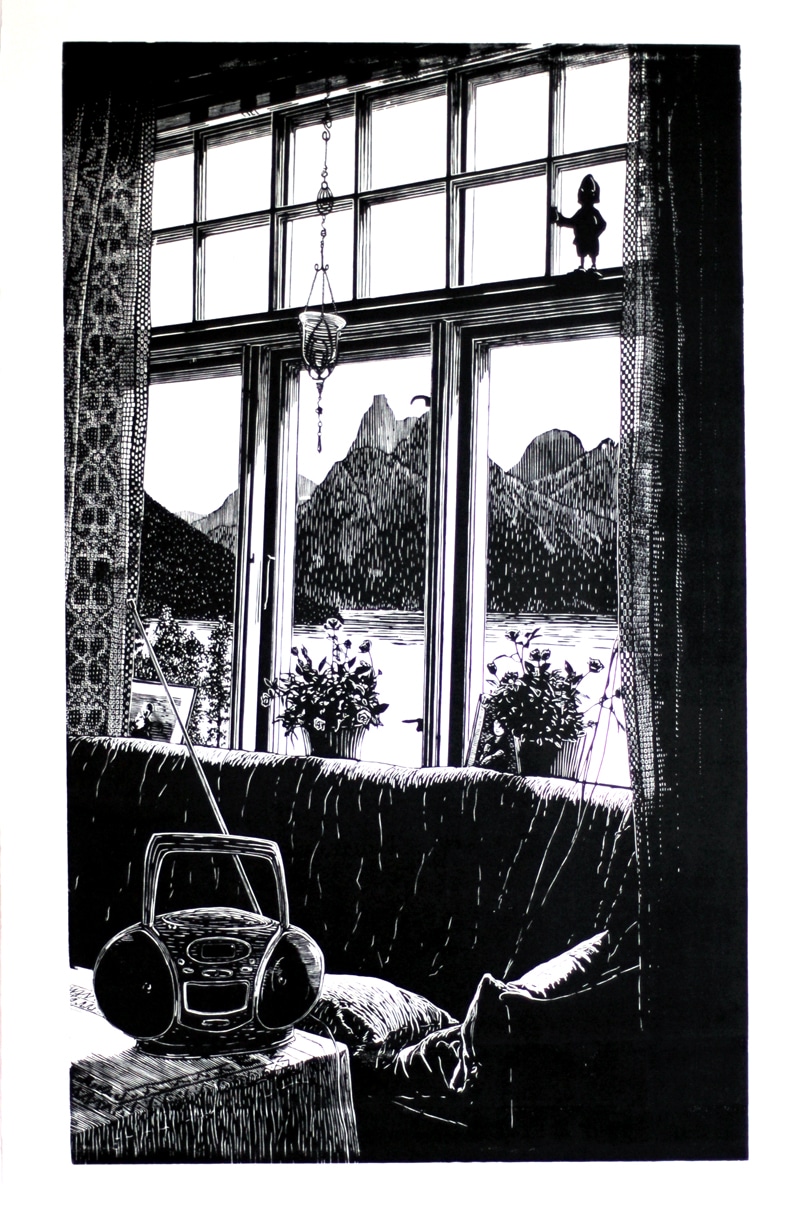You´re focusing on the radio, lifting your eyes to look for something ore someone outside of the window. Or perhaps you look into your own soul. Meditating what man is capable of. It´s 22. July, and you´re listening to the news about the terror attack in Oslo and at Utøya.
The lines of Mattias Härenstam´s woodcuts are sharp and fateful. He works with a selection of the smallest blades on birch plywood. The hard wood gives the resistance he needs to form his astonishingly detailed works, and to obtain the density and darkness of the ink print. The subject of his woodcuts are often variations on the same themes as he works with in sculpture and film; they describe the relationship between an organized surface and the underlying chaos. In various ways his works revolves around questions about the fleeting or transitory in our lives, the way living things are constantly in juxtaposition with death. Feelings and experiences we find hard to grasp, because they´re hidden somewhere beneath the surface of our consciousness.
Härenstam´s works often imply situations where personal, but also a larger, social and political level of control is lost. The motives are autobiographical, mixed with references to art history or mythology. As mentioned, Summer Landscape with Radio refers to the terror in Oslo and on Utøya July 22, 2011, while In the Woods refers to the murder of the Swedish Prime minister Olof Palme in 1986. The lower part of this picture is based on a famous press photo from the scene. But the picture also relates to Friedrich’s painting Chasseur im Walde from 1814. The policeman who almost disappears into the dense, dark forest is as doomed as the French soldier among Caspar David Friedrich´s German spruce trees.
Mattias Härenstam´s works revolves largely around the disintegration of the welfare state, about what lies smouldering under the well-polished surface of our absurd and disturbing existence. How something familiar in one blow turns into something frightening. Thus The Four Riders Across the Road may be interpreted as a reference to The Four Horsemen of the Apocalypse, as described in the Book of Revelation in the New Testament of the Bible (John of Patmos, at 6:1-8). The riders are often seen as symbolizing Conquest or Pestilence, War, Famine, and Death. The Christian apocalyptic vision is that the four horsemen are to set a divine apocalypse upon the world as harbingers of the Last Judgment.
With seductive craftsmanship and an intense and moody signature, Härenstam gives everyday life an ominous twist. His works are exquisite and refined, like gothic stories of great beauty, often with a persistent backdrop of dark humour.
In his works Härenstam goes behind the facade, below the surface, always giving room for the unexpected. Persistently, he pushes his art beyond both disappointing reality and facile surrealism. The result is stunning.




